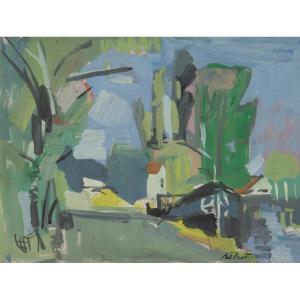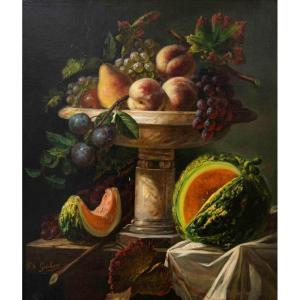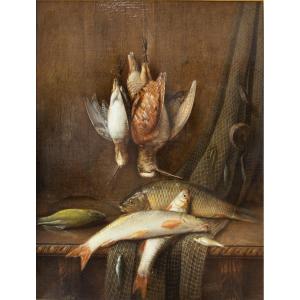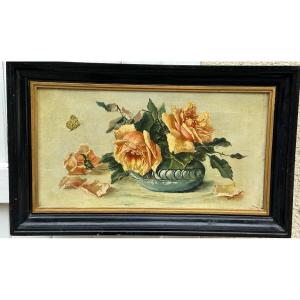Possibly exhibited at the Art Salon of Tours organized by the Société des Amis des Arts de la Touraine in July 1889.
Mademoiselle Pauline Vallée was born in Lyon and was a student of Marc Bruyas (1821-1896), a Lyon master of floral composition canvases, and Blaise Desgoffe (1830-1901), a virtuoso of still life inspired by the Dutch masters of the 17th century.
In the 1880s, Pauline Vallée settled in Montparnasse, Paris, where she would remain until the 1920s. At that time, the neighborhood was undergoing a major transformation and was gradually becoming a leading artistic hub. In 1886, she exhibited for the first time at the Paris Salon with a still life entitled “Fruits and Objects of Art,” which was well received by critics.
A member of the Société des Artistes Français, little is known about this woman artist’s life beyond the fragmentary details recorded in Salon catalogues. She exhibited not only in Paris but also in Lyon, Dijon, Rouen, Tours, Nancy… She primarily showed still lifes, while occasionally presenting a few portraits.
This work by Pauline Vallée is characteristic of Japonism, which began to influence France as early as the mid-19th century. The opening of Japan in 1853, as well as its participation in the 1878 Universal Exhibition, allowed Japanese art to enter the Western world—first within small circles of collectors and artists, and later among the general public through the world’s fairs.
One can thus discern a Japonist vase from the Meiji era, made of deep blue enameled ceramic with a long neck and gilded motifs, adorned with yellow chrysanthemums imported from China. It is set among various chinoiseries—such as a fan, porcelain box, embroidered fabric, lacquered furniture, and tapestry—reflecting the fascination with the Orient at the end of the 19th century. The sober and luxurious European neoclassical marble pedestal acts as a scenographic display, enhancing the vivid presence of these Japonist objects.






































 Le Magazine de PROANTIC
Le Magazine de PROANTIC TRÉSORS Magazine
TRÉSORS Magazine Rivista Artiquariato
Rivista Artiquariato